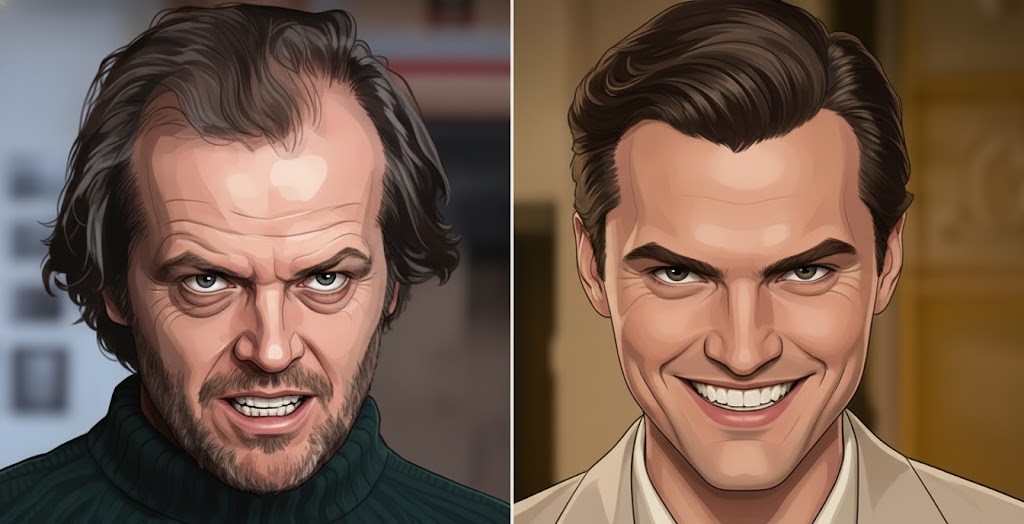Your cart is currently empty!
We all recognize that face, that sinister, almost maniacal smile. For most of Hollywood, he defined a kind of American madness: charming, dangerous, and just self-aware enough to grin while the world burned around him. That’s not a legacy anyone inherits lightly. And yet his son seems to not only understand that undertaking, but takes it even further.
He’s not just chasing his father’s legend. He’s walking through it.
The Weight of a Grin
Jack Nicholson’s face became cinematic shorthand for moral decay. He was just a smirk away from total apocalypse. From The Shining to One Flew Over the Cuckoo’s Nest to Batman, he was the man you couldn’t stop watching, even if it terrified you. He didn’t just play villians. He played the internal chaos of every man who thought he was good.
His son, Ray, in contrast doesn’t replicate that energy. He distills it. You don’t even have to know his name in Smile 2 to recognize that grin. The moment it creeps up, you see exactly whose blood runs in his veins. His father’s madness was volcanic, but Ray’s is anesthetized and internalized. His horror doesn’t come from explosion, but from a slow erosion of sanity behind calm eyes.
When Ray’s mouth curls, you may know where it came from, but it has evolved. Where Jack’s smile said “I’m losing it,” Ray’s says “I already have, and I like it here.”
The Fragile Mask
In the movie Borderline, Ray refines the act of unraveling. His performance moves like a man balancing both guilt and desire with a type of surgical precision. He teeters on the suggestion of danger without overplaying it. His restraint is what makes him magnetic.
Our generation grew up with Jack’s horror thriving on spectacle. He was the screaming, smashing, physical performance type of madness. Ray hides it under his quietness. You can hear the scream in his silence.
The Holy Trinity of Madness
Jack Nicholson built a mythology in three acts:
R.P. McMurphy in One Flew Over the Cuckoo’s Nest – rebellion as sanity
Jack Torrance in The Shining – isolation as infection
The Joker in Batman – chaos as an art form
Each character had a different way of showing what it meant to lose one’s sanity on screen. Each character turned madness into a powerful performance. Ray doesn’t try to outperform his father. Instead, he walks through that legacy; exploring the quieter forms of societal collapse that the newer generations recognize. His madness isn’t mythic so much as it’s functional. It smiles through it’s therapy sessions and texts “I’m fine”.
Inherited Horror
We see every generation redefine fear. Jack gave us the monster within the man. Ray is giving us the man pretending not to be one. Where The Shining howled onscreen, Smile 2 only whispers. Where we watch the Joker dance through chaos, Ray’s characters live in it. The new madness isn’t about losing control, but maintaining it far too well.
Ray is still new in the horror genre, but as he continues to cross into that territory, his real potential is only beginning to surface. When he’s finally given the lead in something truly deranged, it won’t feel like stunt casting. It will feel like cinematic destiny.
The famous grin has returned to the screen, but it no longer belongs to a man slipping into madness in a hotel, or a maniacal clown in Gotham. It belongs to his son; quieter, colder, and much more intimate.
If Jack was our apocalypse, Ray is the fallout.
Madness may not be hereditary, but performance is, and when that Nicholson smile stretches across the screen, Hollywood’s longest-running nightmare continues; one perfect, terrifying grin at a time.


Leave a Reply